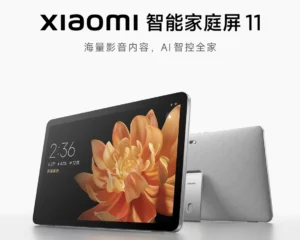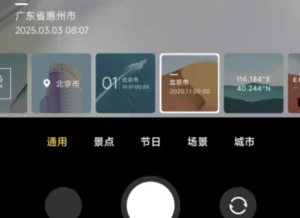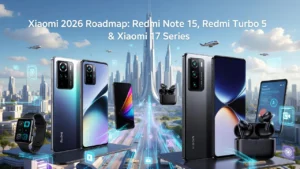Xiaomi Redmi Book 14 2025: Affordable Power with Older Intel CPUs
Sure, here is the article written in English, following all your requirements.
Xiaomi Quietly Drops the New Redmi Book 14 2025: Last Gen Intel CPUs, a Curious or Strategic Move?
Xiaomi has a knack for surprising the tech world, and their latest move with the Redmi Book 14 2025 “Renewed Edition” laptops is no exception. These sleek machines have silently landed in China, starting at a rather enticing CNY 2,999 (around $417 USD). What’s got tech enthusiasts buzzing, though, is the choice of processors: Intel’s 12th and 13th generation chips. Is this a smart play for affordable power, or are they taking a step back in the tech race? Let’s dive into the nitty-gritty of these new laptops, what they’re packing, and why they might just be your next practical purchase.
A Subtle Launch, Seriously Competitive Pricing
Xiaomi, always the champion of high-quality tech without the sky-high price tags, has just expanded its laptop lineup with the Redmi Book 14 2025 Renewed Edition. You can grab these at Xiaomi’s official store, their Youpin platform, and major retailers like JD.com. They’re aimed squarely at folks who want a solid blend of performance, portability, and value. Kicking off at CNY 2,999 (~$417 USD) for the base model with 16GB of RAM and 512GB of SSD storage, and going up to CNY 3,298 (~$459 USD) for the slightly beefier version, these laptops are definitely aiming to undercut rivals like the MacBook Air or Lenovo IdeaPad.
But here’s the real head-scratcher: the processors. We’re talking about the Intel Core i5-12450H (12th Gen) and the Intel Core i5-13420H (13th Gen). Now, these aren’t exactly the latest chips hitting the shelves, but they still pack a decent punch for everyday tasks, multitasking, and getting your work done. The big question remains: is this enough to really shine in 2025?

Specs That Still Pack a Punch
While they might not be sporting the brand-new Intel Arrow Lake processors, the Redmi Book 14 2025 Renewed Editions definitely don’t skimp on other key areas. Get ready for a gorgeous 14-inch IPS display with a sharp 2.8K (2880 x 1800) resolution and a buttery-smooth 120Hz refresh rate. This means your visuals will be crisp and fluid, perfect whether you’re deep in work, binge-watching your favorite shows, or even doing some light photo editing. Thanks to 100% sRGB color gamut coverage, your colors will be accurate too. Plus, with 400 nits of brightness and TÜV Rheinland certification for low blue light, your eyes will thank you, even after those marathon work sessions.
Underneath the hood, the Core i5-12450H and Core i5-13420H processors offer respectable performance. Benchmarks suggest they lag about 20-25% behind more recent options like the Core Ultra 5 225H, but let’s be real, for web browsing, document editing, streaming HD content, and general office software, these laptops are more than up to the task. Paired with 16GB of LPDDR5 RAM and a speedy 512GB PCIe 4.0 SSD, they’re ready to roll. And don’t worry about running out of juice; the 56Wh battery is rated for up to 13.8 hours of use, and if you’re in a pinch, the 100W fast charging can get you to 50% in just about 32 minutes.

Xiaomi’s design game is still on point here. With a sleek unibody aluminum chassis, these Redmi Books weigh in at a feather-light 1.36 kg and are just 15.9 mm thick, making them incredibly portable. You get modern connectivity too, including USB-C 3.2 Gen 2, HDMI 2.1, USB-A 3.2 Gen 1, and even a USB-A 2.0 port. Wi-Fi 6 and Bluetooth 5.2 are standard. But the real magic might be HyperOS Connect. This feature allows for seamless integration with your other Xiaomi devices – think smartphones and tablets – enabling quick file sharing, using your phone’s camera as a webcam, or even controlling presentations with gestures from your wearable.

Why Go with Last Gen Processors?
Xiaomi‘s decision to stick with 12th and 13th Gen Intel CPUs instead of the newer Core Ultra series has definitely raised a few eyebrows. While the Core i5-12450H and Core i5-13420H are solid performers for most everyday computing, they naturally can’t match the raw power and efficiency of the latest generation. This strategic choice likely boils down to cost control. In a market where cutting-edge components are getting pricier, Xiaomi can leverage proven and reliable chips to keep their prices competitive without sacrificing core functionality. It’s a smart way to deliver a capable laptop without breaking the bank, especially for students, professionals, and casual users who don’t need top-tier performance for heavy-duty tasks like 4K video editing or serious gaming.
On the flip side, using older processors might make these laptops less appealing to those who always want the absolute newest tech. Features like Thunderbolt 4 or USB 4.0 are missing, and the inclusion of a USB 2.0 port, which many consider outdated, is a bit of a drawback compared to rivals like the Asus Zenbook 14 or HP Spectre x360. However, for the price point Xiaomi is hitting, these compromises might be perfectly acceptable for their target audience.

HyperOS Connect: The Ecosystem Advantage
One of the standout features of the Redmi Book 14 2025 is its deep integration with HyperOS 2. This Windows 11-based operating system supercharges connectivity within the Xiaomi ecosystem. With handy features like Cross-device Camera, Communication Sharing, and Wearable Gesture Control, you’re looking at a truly seamless experience across your Xiaomi devices. Imagine quick file transfers, using your laptop’s keyboard to type on your phone or tablet, or controlling presentations with a flick of your wrist. Plus, with the Xiao Ai Assistant and AI features like noise reduction for calls and real-time subtitle transcription, these laptops offer tangible value, especially for professionals and content creators.
Market Positioning and Competition
In a laptop market often dominated by heavy hitters like Apple, Lenovo, and HP, the Redmi Book 14 2025 is positioning itself as a serious budget-friendly contender that really emphasizes value for money. When you stack them up against the MacBook Air M2 (starting around $999 USD) or the Lenovo Yoga Slim 6 (around $800 USD), Xiaomi’s laptops offer comparable specs in terms of display quality and RAM, but at a significantly lower price point. However, the absence of the latest processors and some connectivity limitations might lead some buyers to opt for newer models, particularly if they need advanced AI support or are serious gamers.
Still, that initial price tag of $417 USD is incredibly hard to ignore. This is especially true for emerging markets like India, where pricing is expected to be in the ₹35,000-₹40,000 range. This makes the Redmi Book 14 2025 a genuinely attractive option for students, freelancers, and small businesses who need a reliable laptop without blowing their budget.

Availability and What’s Next
For now, the Redmi Book 14 2025 Renewed Editions are exclusive to China. Xiaomi hasn’t made any official announcements about a global rollout, which suggests they might be gauging demand before expanding into markets like Europe, India, or Latin America. Given Xiaomi’s track record, it’s highly likely we’ll see these laptops pop up in other countries within the next few months, potentially with regional price adjustments.
So, Is the Redmi Book 14 2025 Worth It?
Xiaomi’s new Redmi Book 14 2025 Renewed Edition laptops present a compelling proposition for anyone hunting for an affordable laptop with a premium design, a fantastic display, and solid performance for everyday tasks. While the choice of 12th and 13th Gen Intel processors might seem like a step back in our tech-obsessed world, the combination of competitive pricing, excellent portability, and ecosystem features like HyperOS Connect makes these laptops a genuinely appealing choice for a broad audience.
If you’re a student, a professional needing a lightweight device for work on the go, or simply someone who appreciates getting the most bang for their buck, the Redmi Book 14 2025 is definitely worth a closer look. However, if having the absolute latest in processing power and connectivity is non-negotiable, you might want to explore other options. What do you think of Xiaomi’s strategy here? Is it a smart move or a missed opportunity? Let us know your thoughts in the comments below!
Source Alles Xiaomi and Weibo







